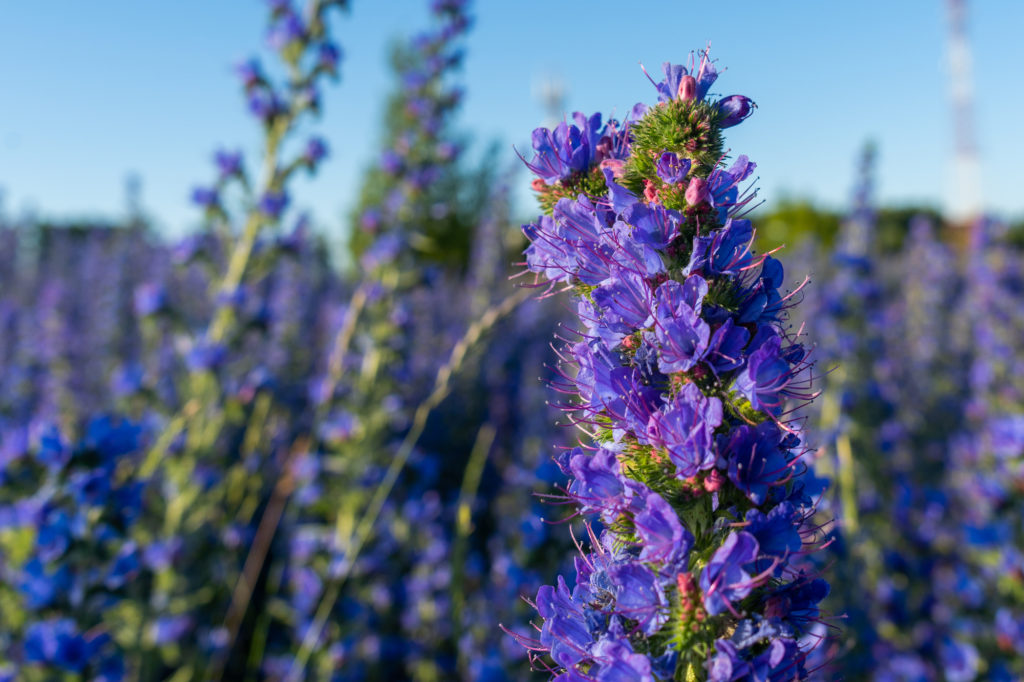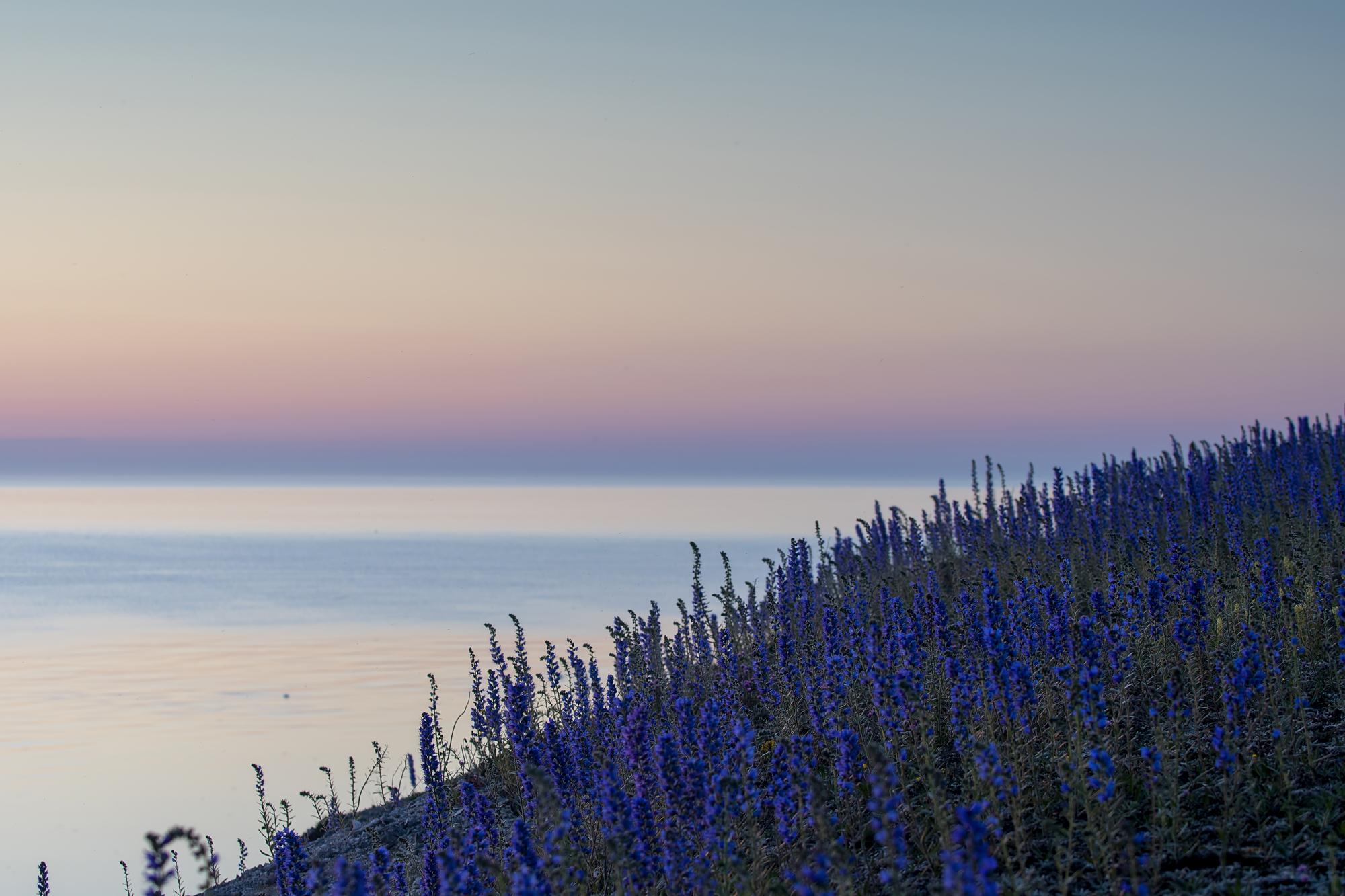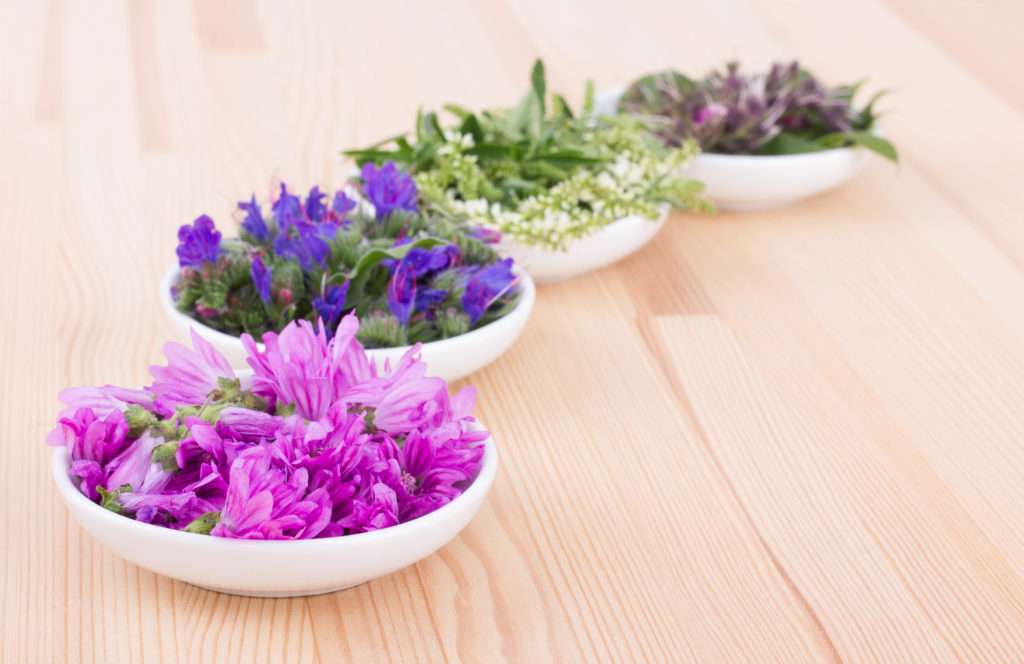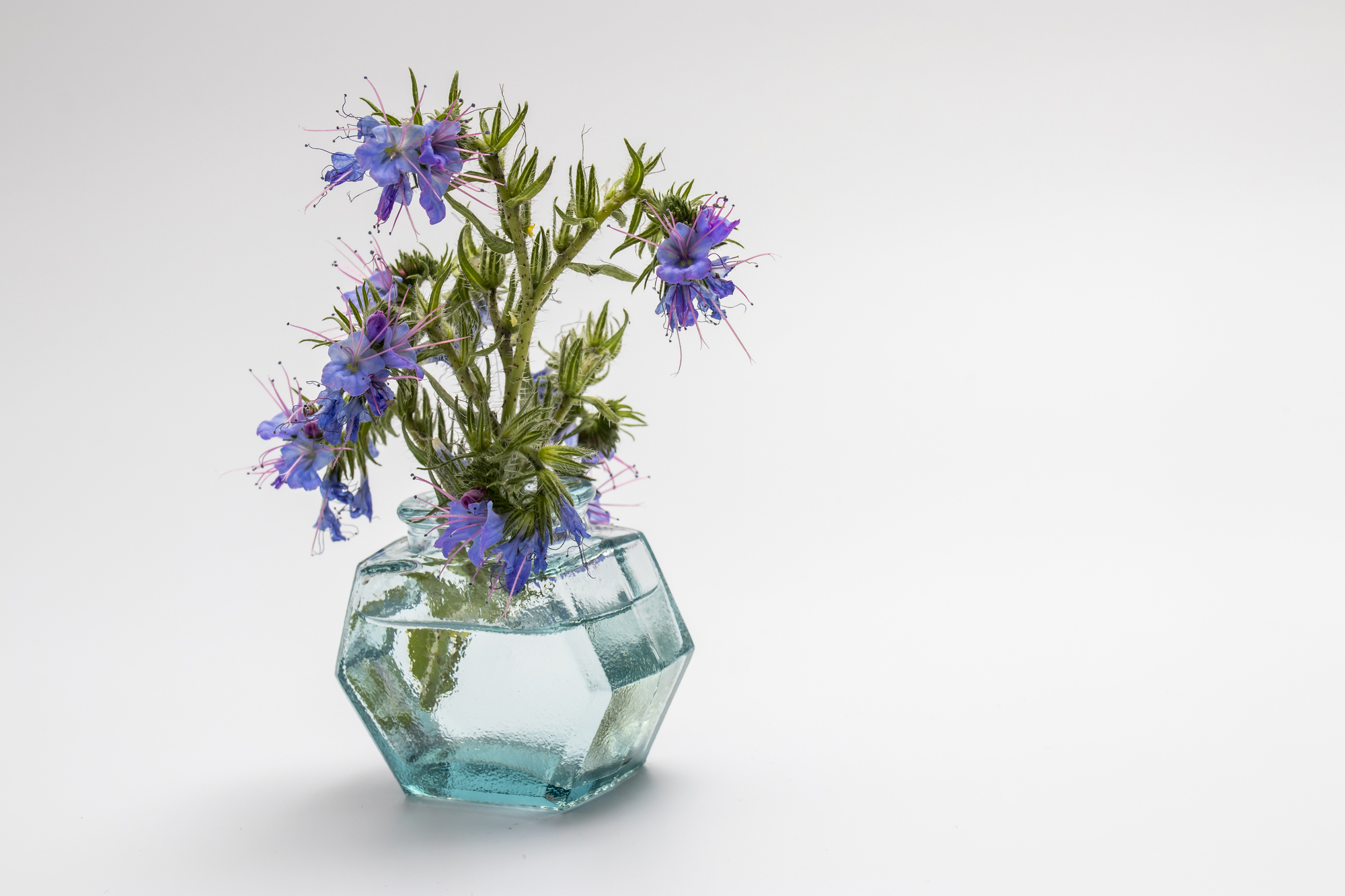Viper’s-bugloss is a flowering herbaceous plant belonging to the family Boraginaceae. They are perennial plants with an erect stem, hairy leaves and many dense spikes of bright blue or violet funnel-shaped flowers.
The scientific name Echium vulgare has two meanings: “vulgar” (common) and “A city of Lydia” (Echium = Echioion). The word “Bugloss” comes from greek, for ox-tongued due to its rough texture. Additionally, the plant’s common name may derive from its shape, which resembles a snake’s head or from the spotted stem, which resembles snake’s markings.
Viper’s bugloss is also known by the names “snake flower,” “blueweed” and “blue devil”. Despite its scary name, viper’s bugloss is loved by insects. Bees, hoverflies and butterflies all enjoy these flowers.
Identification
Vipers bugloss is erect with many branches and leaves. It grows up to 1.5 m and blooms violet or blue flowers. The stem is hairy and slightly curved, and the leaves are variegated, rectangular, with a small petiole and pale green on the upper side and whitish-green on the underside. When the plant reaches maturity, it starts flowering blue flowers.

Where To See Viper’s Bugloss
This flower is native to the Mediterranean region, where it grows in open, sunny hillsides, dry grassland, and chalky soil.
Viper’s bugloss also grows on calcareous soils of Northern France, Belgium, the Netherlands and Germany as well as being naturalized in Northern Ireland and parts of North America.
It grows easily in well-drained soils in full sun, but it can survive in wet soil if it is allowed to dry out.

When To See It
They normally appear in early summer; however, they can also appear during the late Autumn.
Common Uses
- In ancient times it was used as a medicinal plant to treat boils, headaches, chest conditions etc. However, it has become less popular in modern times.
- It is popular as a cake decoration.
- The young leaves, whether raw or cooked, are edible when they are picked when still small and green. They can be used as a garnish and as a relish ingredient. However, it has been reported that some animal studies have shown vipers bugloss to be cancerous and may also cause liver damage.
- The vipers bugloss is also used for making weddings flutes and violets: three or five leaves of the plant are attached to an arrow and rolled up in beeswax.
- Viper’s bugloss was said to be a herb that would expel poisons and venom from the bite of a viper, hence its name.

Growing Viper’s Bugloss
Viper’s buglosss is usually grown in the UK by cutting the potted plant and spreading it in its place of destination.
The seeds are best grown in Autumn, and is very easily grown and can even survive in poor soil. When growing, it is recommended to give it some sun, and young plants also need twice a week watering. It can be fertilized once a month with organic fertilizer.
Viper’s bugloss grows best when watered regularly and regularly shaped. It also needs well-drained soil that is not too rich or dense. If you want to grow this species, you can put it in pots, containers or even directly in the ground where the roots are very adaptable.
If you do not want to transplant this species, you should put it into a big pot or container for better results. You have to leave room in your garden or in your pots because there are many plants that grow in groups of 3 or 4. Be sure to sow a few seeds every year for best results.

Are Vipers Bugloss Invasive?
Viper’s bugloss is not considered invasive in the UK, but the flower has been known to be a problem in some European countries.
Sources and References
- Viper’s Bugloss – naturalmedicinalherbs.net
- Bugloss, Viper’s – botanical.com
Sam loves to learn about animals and their habitats. He has been a nature lover from a very young age, and has been writing papers and articles about wildlife for as long as he can remember.
